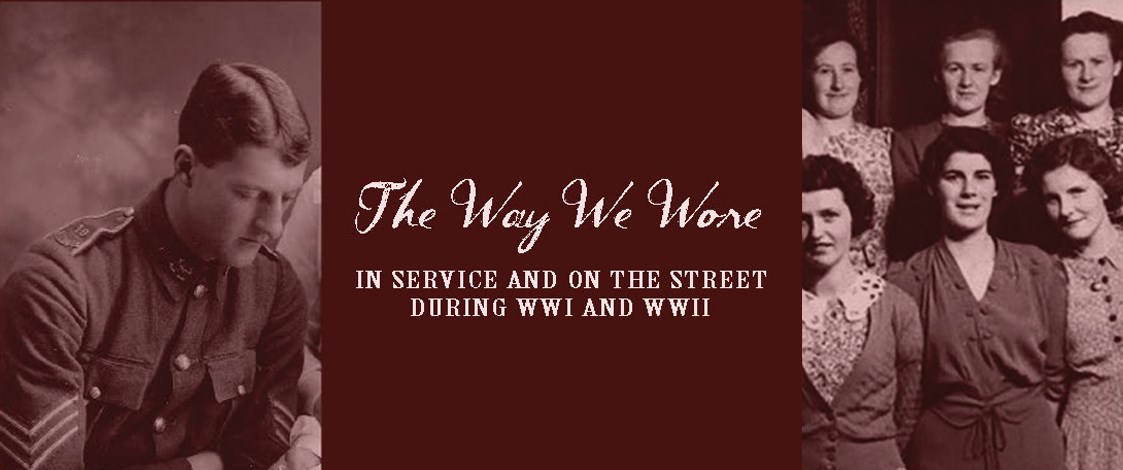Exhibitions
The Way We Wore: In service and on the street
Virtual exhibition

Fashion, as we think of it, was all but suspended during the First and Second World Wars. But that didn’t mean clothing wasn’t important. We made inventive use of the limited materials available, and women found a freedom in adopting more practical garments such as trousers and shirts for physical work.
With so many New Zealanders involved in the conflict, almost everyone was affected by the loss of friends and family members. Clothing was one way that those at home could demonstrate the solemnity of the time. Bright colours and ostentatious dress was considered inappropriate. Instead women demonstrated their patriotism by wearing garments with military-style details and colours.
Life at home had to continue and women were called upon to step into previously male dominated roles such as farm work, transport and factory work. The physicality of the work women were doing meant that traditional garments weren’t appropriate. Women adapted their clothing for easier movement and raided men's wardrobes for shirts and trousers.
This culture of adaptation was even more important during World War Two when rationing was introduced. The shortage of garment making materials led to creative ways of 'making do' with what was available.
The experience of these world wars had a great impact on New Zealand society. Women had gained a great deal of freedom during wartime and many were reluctant to return to pre-war gender definitions - including the definition of what was proper for a woman to wear.
Curated by Glory Days Magazine and the New Zealand Fashion Museum.
When & where
Online only exhibition